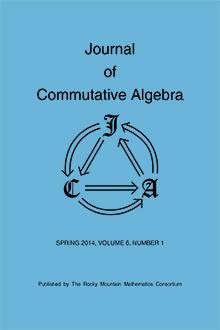Abstract
We study random walks on contingency tables with fixed marginals, corresponding to a (log-linear) hierarchical model. If the set of allowed moves is not a Markov basis, then tables exist with the same marginals that are not connected. We study linear conditions on the values of the marginals that ensure that all tables in a given fiber are connected. We show that many graphical models have the positive margins property, which says that all fibers with strictly positive marginals are connected by the quadratic moves that correspond to conditional independence statements. The property persists under natural operations such as gluing along cliques, but we also construct examples of graphical models not enjoying this property. We also provide a negative answer to a question of Engstr\"om, Kahle and Sullivant by demonstrating that the global Markov ideal of the complete bipartite graph $K_{3,3}$ is not radical.
Our analysis of the positive margins property depends on computing the primary decomposition of the associated conditional independence ideal. The main technical results of the paper are primary decompositions of the conditional independence ideals of graphical models of the $N$-cycle and the complete bipartite graph $K_{2,N-2}$, with various restrictions on the size of the nodes.
Citation
Thomas Kahle. Johannes Rauh. Seth Sullivant. "Positive margins and primary decomposition." J. Commut. Algebra 6 (2) 173 - 208, SUMMER 2014. https://doi.org/10.1216/JCA-2014-6-2-173
Information





